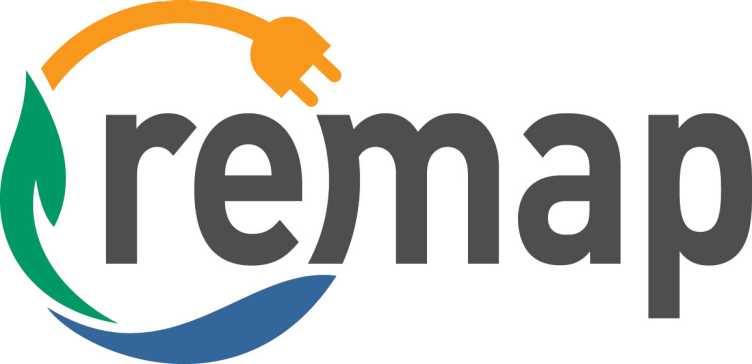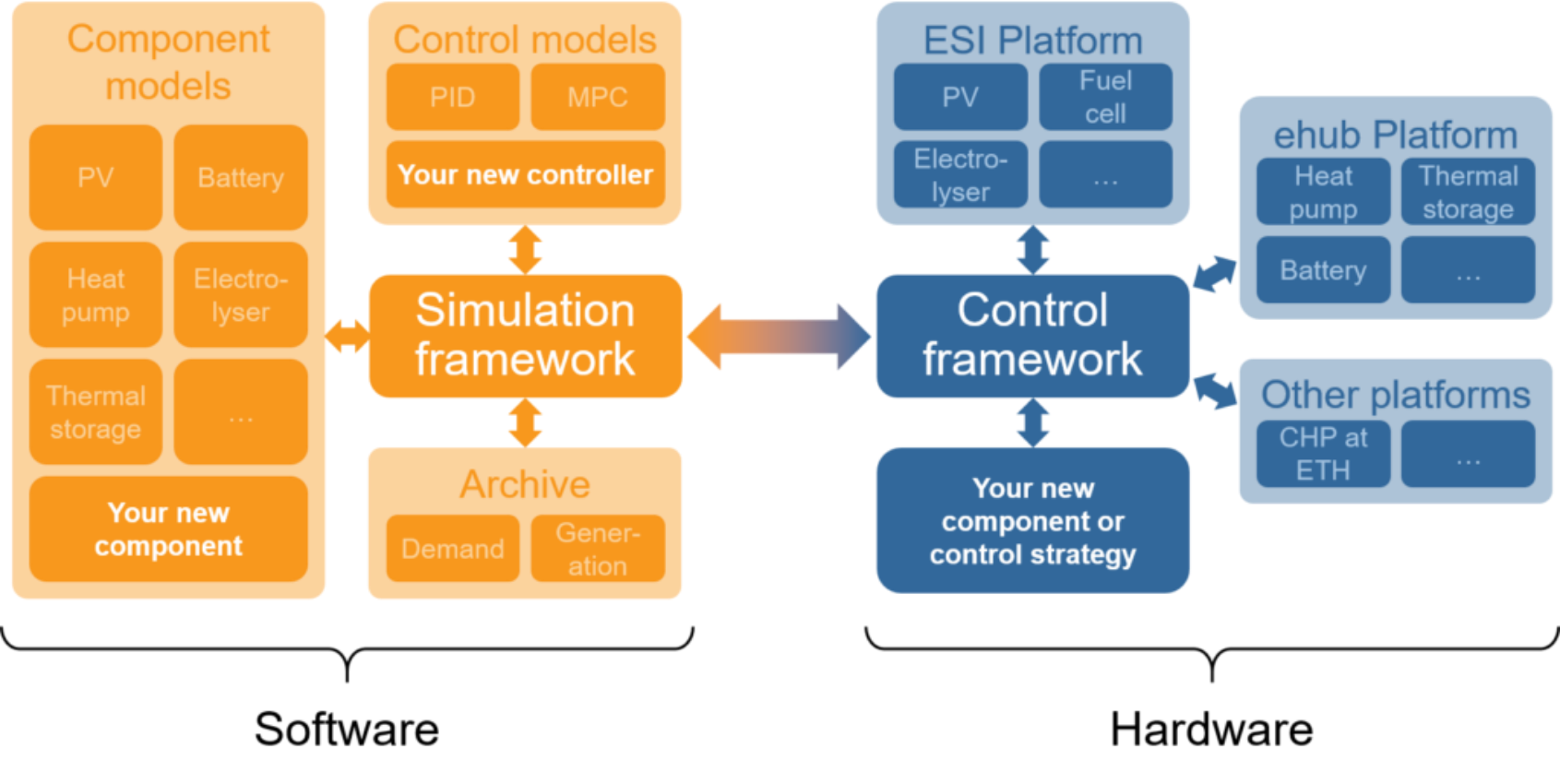ReMaP Renewable Management and Real-time Control Platform

Partners: ETHZ (ESC, FEN, PSI, IFA, IET, APSL), EMPA, PSI, SGS
Duration: 01/2020 - 12/2021
Funding: SFOE
Project Leader: Work Package 3 by Dr. Dimos Poulikakos and Dr. Christian Schaffner, Subtask 3.8 by Dr. Turhan H. Demiray
Project Team: Dr. Adamantios Marinakis, Philippe Buchecker, Dr. Turhan Demiray
ReMaP objectives:
The overarching goal of the ReMaP project is to design, build, and deploy an advanced technology platform of national and international relevance that will contribute to the understanding of future energy supply systems. The specific objectives of the project are:
- To enable academic and industrial researchers to assess the performance of energy conversion and storage technologies that are embedded within smart grids with advanced real-time measurement and control capabilities.
- To provide instructors with a unique tool to educate the next generation of scientists, engineers, and technicians that is needed to deliver the energy system of the future.
- To demonstrate the practical use and benefits of energy conversion and storage technologies in smart grids to the relevant societal actors and stakeholders, especially the municipal, cantonal, and federal authorities as well as the general public.

The role of FEN: Responsible for T3.8, developing the Simulation Framework.
Task 3.8: The Simulation Framework objectives:
- enable modelling and simulation of the system under consideration with different technologies, including newly developed ones;
- allow to simulate in an integrated manner a plurality of different control/operational strategies, each typically performed by a different entity (e.g. a building management system, a utility, an aggregator, or at the local controller of a specific device), with a different control objective;
- model, in a static or dynamic manner, various externalities which are not part of the main simulation (e.g. time-series of end-demand and of RES power availability, outcome of market clearing processes etc.);
- be usable by a "higher level" analysis tool, which, for example, performs overall system design/planning or reliability analysis.
It is important to note that the developed Simulation Framework aims at accommodating both "decision-making" logic, executed by various actors as well as "hardware system response" (covering both the response of individual components, such as a CHP, a battery or an electrolyzer as well as the response of the interconnecting networks, such as the electricity, gas and heat networks).
Background for ReMaP
The integration of high shares of fluctuating renewable energy sources and the transformation of the classical role of consumers to “prosumers” are, amongst others, significant challenges for the energy systems of the future. Especially in distribution grids, where the usual energy flow is directed from the transmission network towards the consumers, significant impacts like overloading of grid components might occur. To forestall or delay the need for grid infrastructure upgrades and to improve system safety, stability, and power quality, a thorough understanding of the energy system of the future is crucial. There is thus a clear need for a research platform that allows testing the combination and interaction of energy technologies and carriers; the interaction between the distribution system, buildings, and mobility; and to educate students and experts in renewable energy technologies and decentralized energy systems in a close-to-reality environment.
Task 3.8: A Simulation Framework (SFW), specifically designed for district-level multi-energy systems, able to model and consider all the aspects that are needed for the analysis, design and operation of such systems in a unified manner, will be beneficial to a wide range of stakeholders including gas/electricity utilities. The most important aspects are:
- modelling of all physical components/devices residing in such a system,
- explicit modelling of the electricity/gas/heat networks, coupling various sites in a district with each other as well as with a higher level supply,
- explicit consideration of the plurality of actors and decision-making levels,
- ability to accommodate different control algorithms and/or operational strategies,
- ability to accommodate different energy consumption/generation scenarios,
- ability to perform appropriate analyses at different timescales (i.e. different time resolutions and/or time horizons).
Within the ReMaP project, FEN has the task of developing such a Simulation Framework, to be used both for offline system analysis and design, as well as for hardware-in-the-loop simulations.
The Simulation Framework provides the "interface requirements" and "structural guidelines" to accommodate a plurality of models and algorithms, relating to the design and operation of district-level multi-energy systems. In this way, the users of the Simulation Framework (i.e. the other ReMaP partners or potential external users) wishing to perform district-level simulations only have to provide their domain-specific models or algorithms interfaced with the Simulation Framework according to the specifications provided by the framework. These specifications define the required input and output as well as the required model complexity, per model or algorithm, and per type of analysis for which the model/algorithm is to be used. Thanks to its modular structure, these models/algorithms are treated in a "black-box" manner by the Simulation Framework.
In addition, standard models of all the considered components and actors are developed. These models might need to be replaced by more detailed ones, provided by other ReMaP tasks or future work, depending on the type of analysis performed. These models make up a model library which is an integral part of the Simulation Framework.
The Simulation Framework is interfaced with the ReMaP Control Framework, thus allowing to perform hardware-in-the-loop simulations via the latter, as illustrated in the Figure.

Latest news: